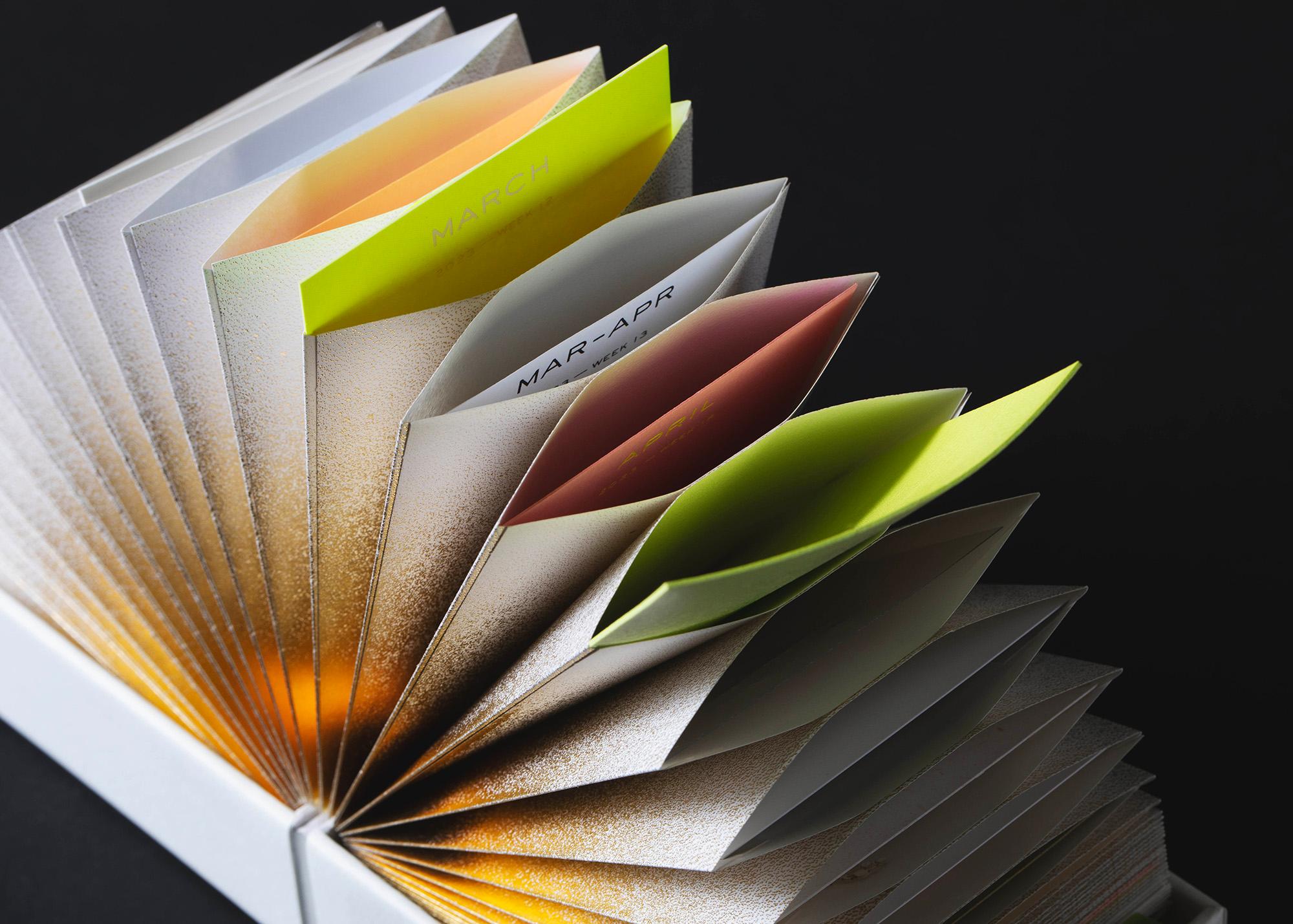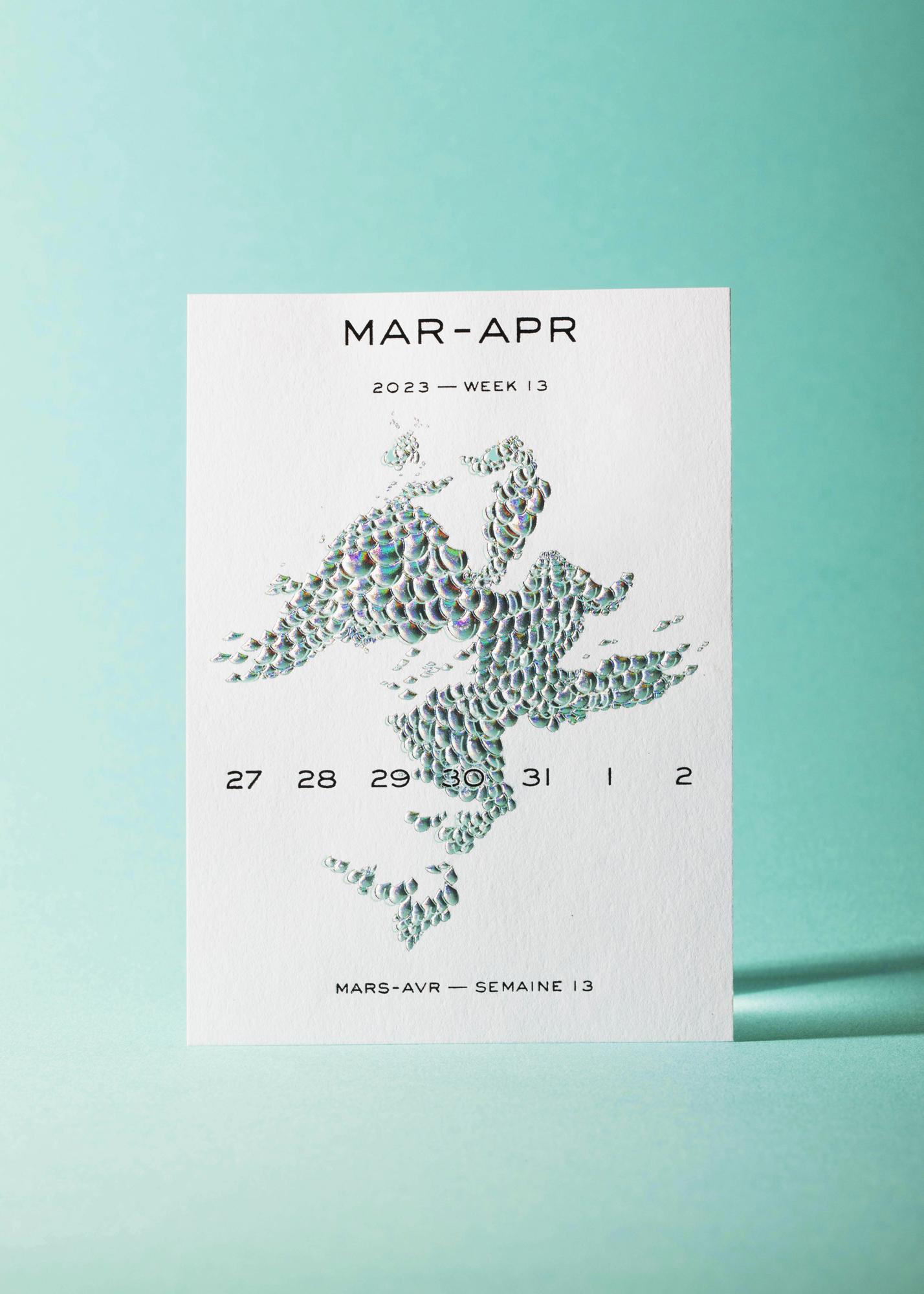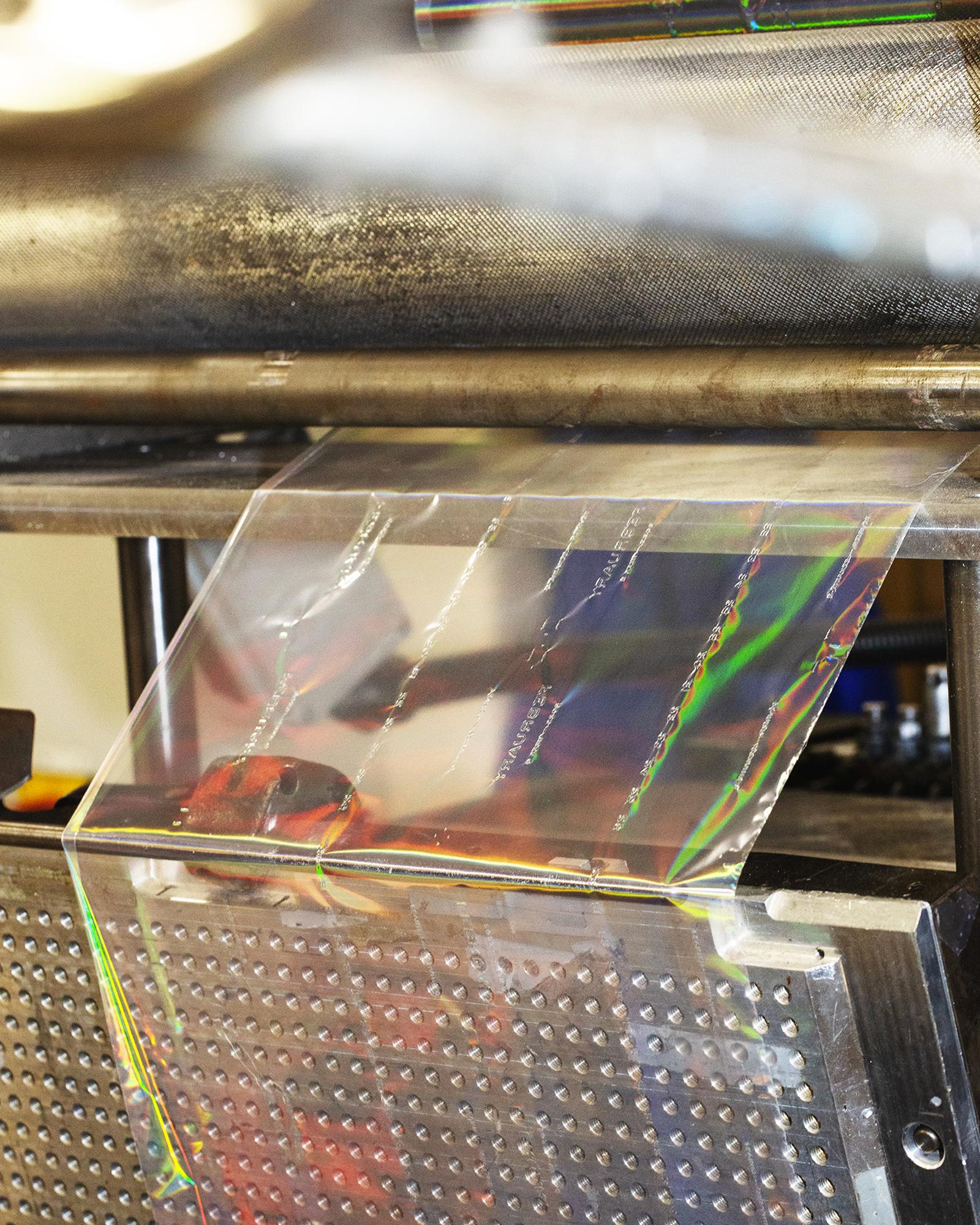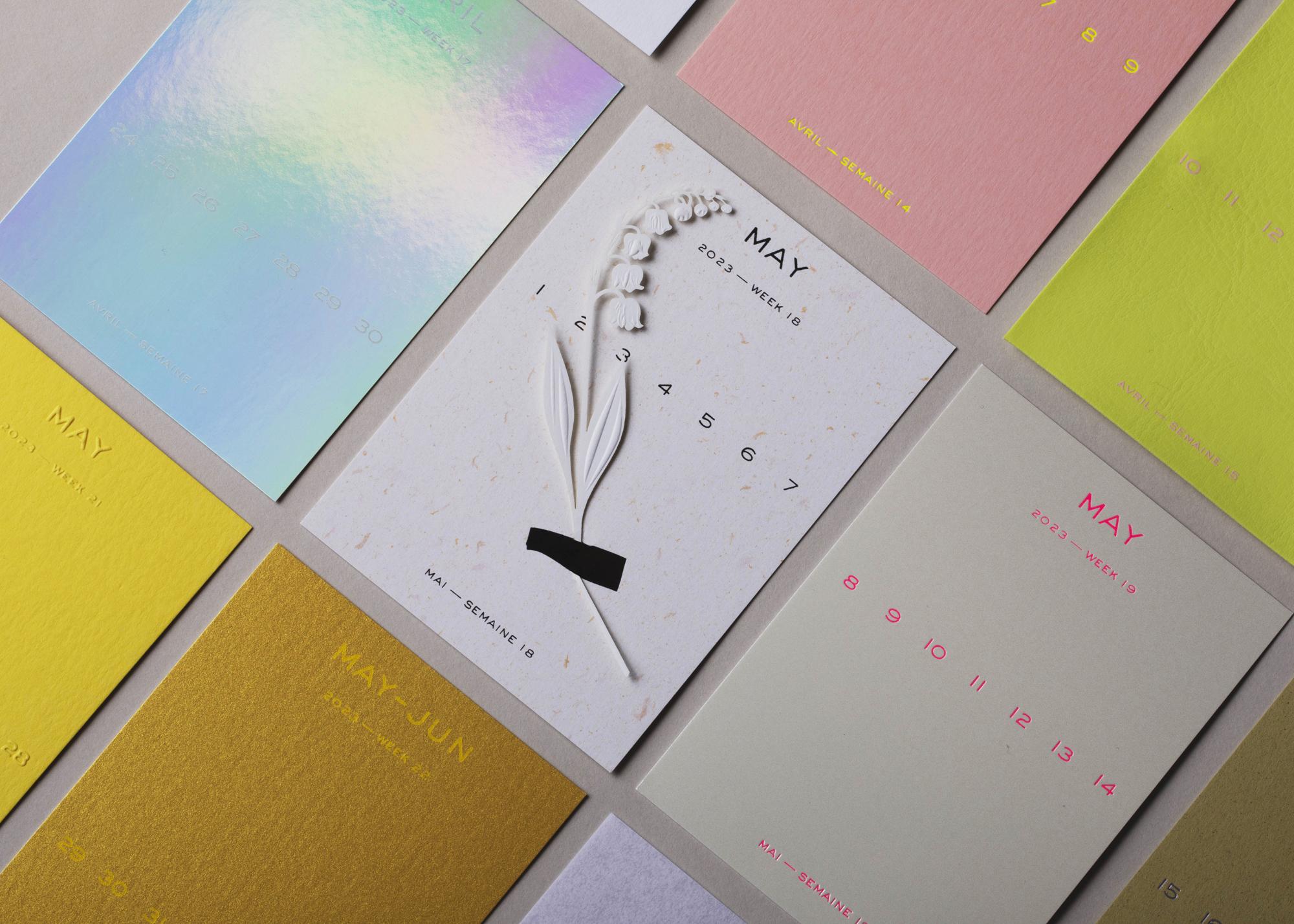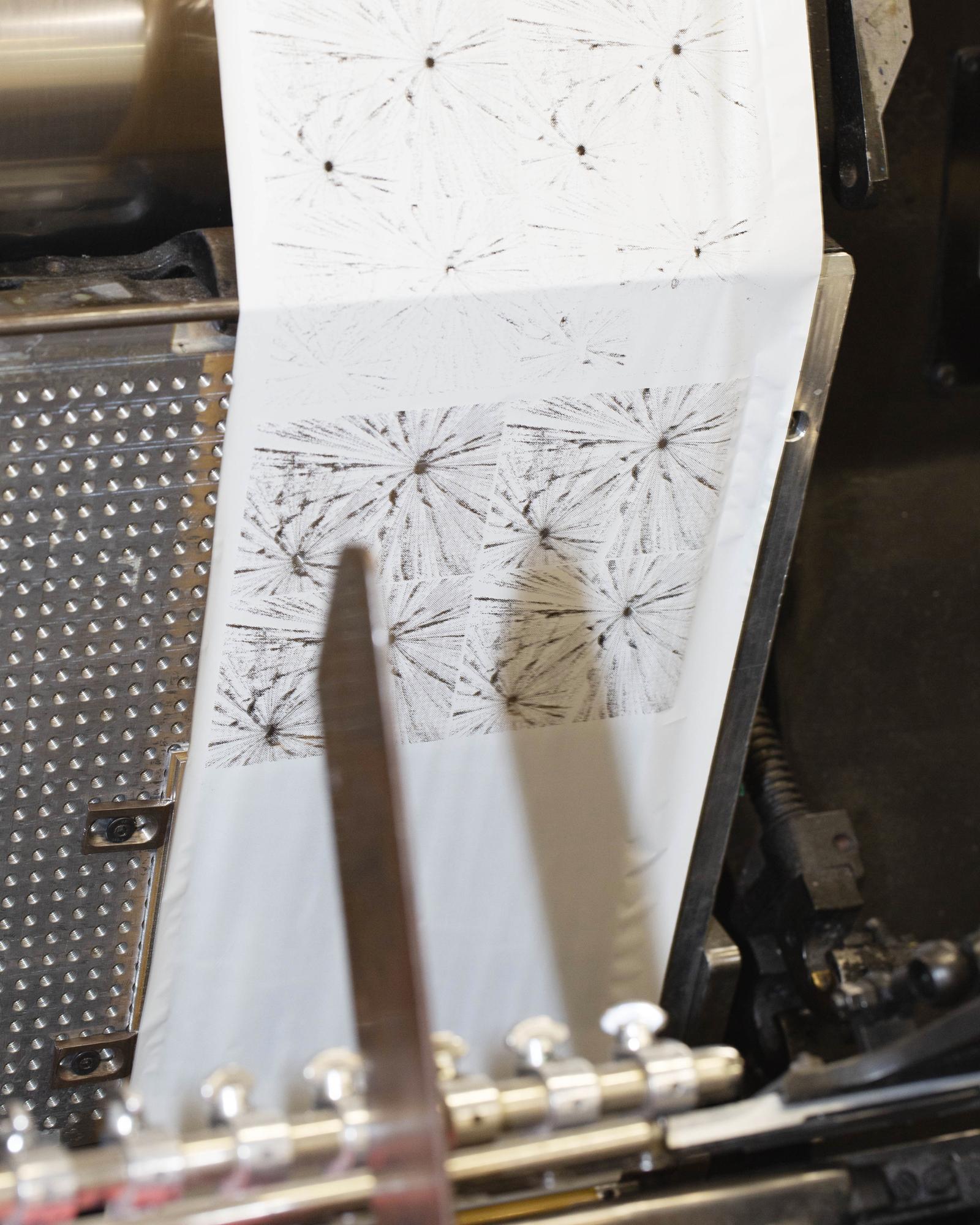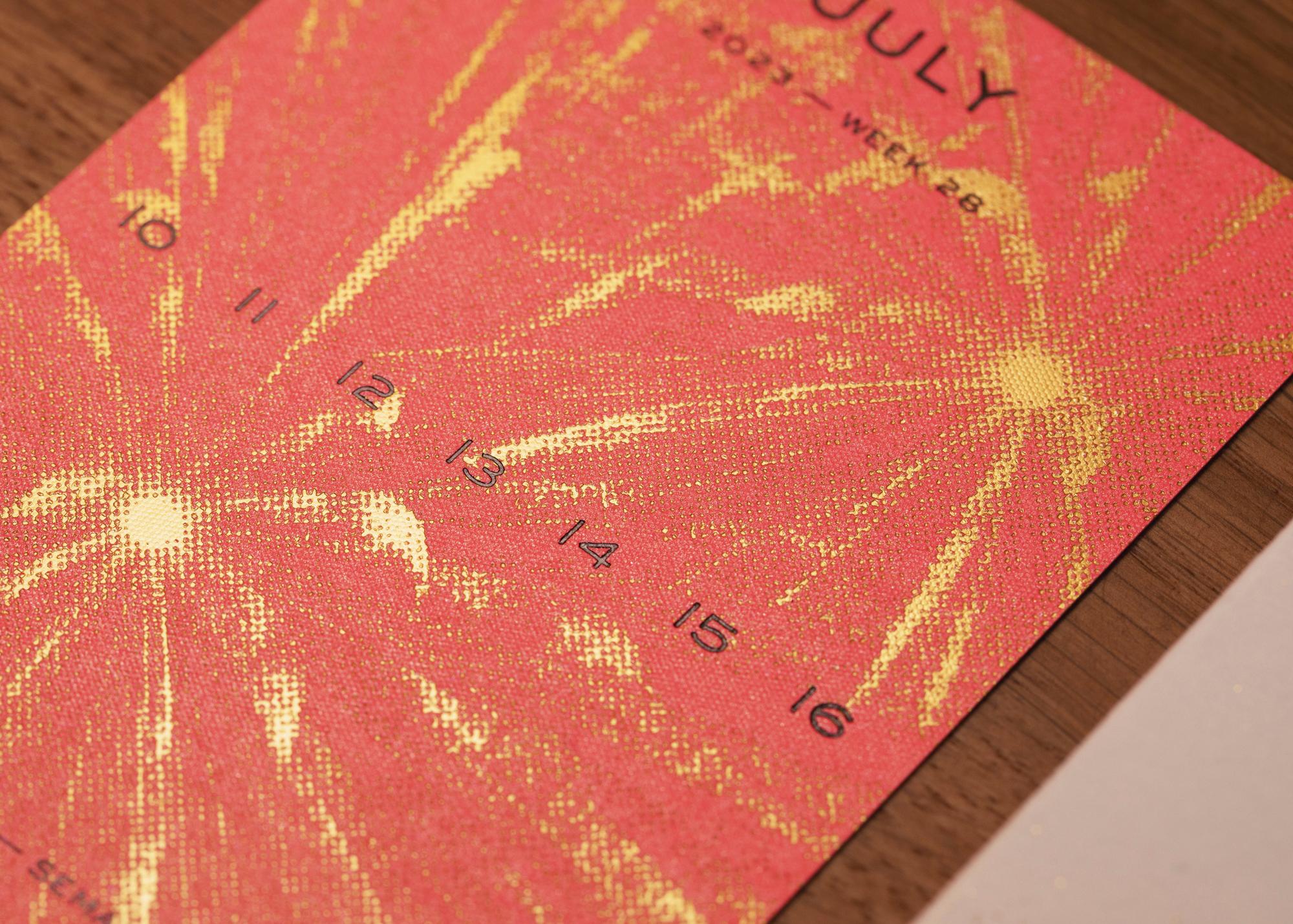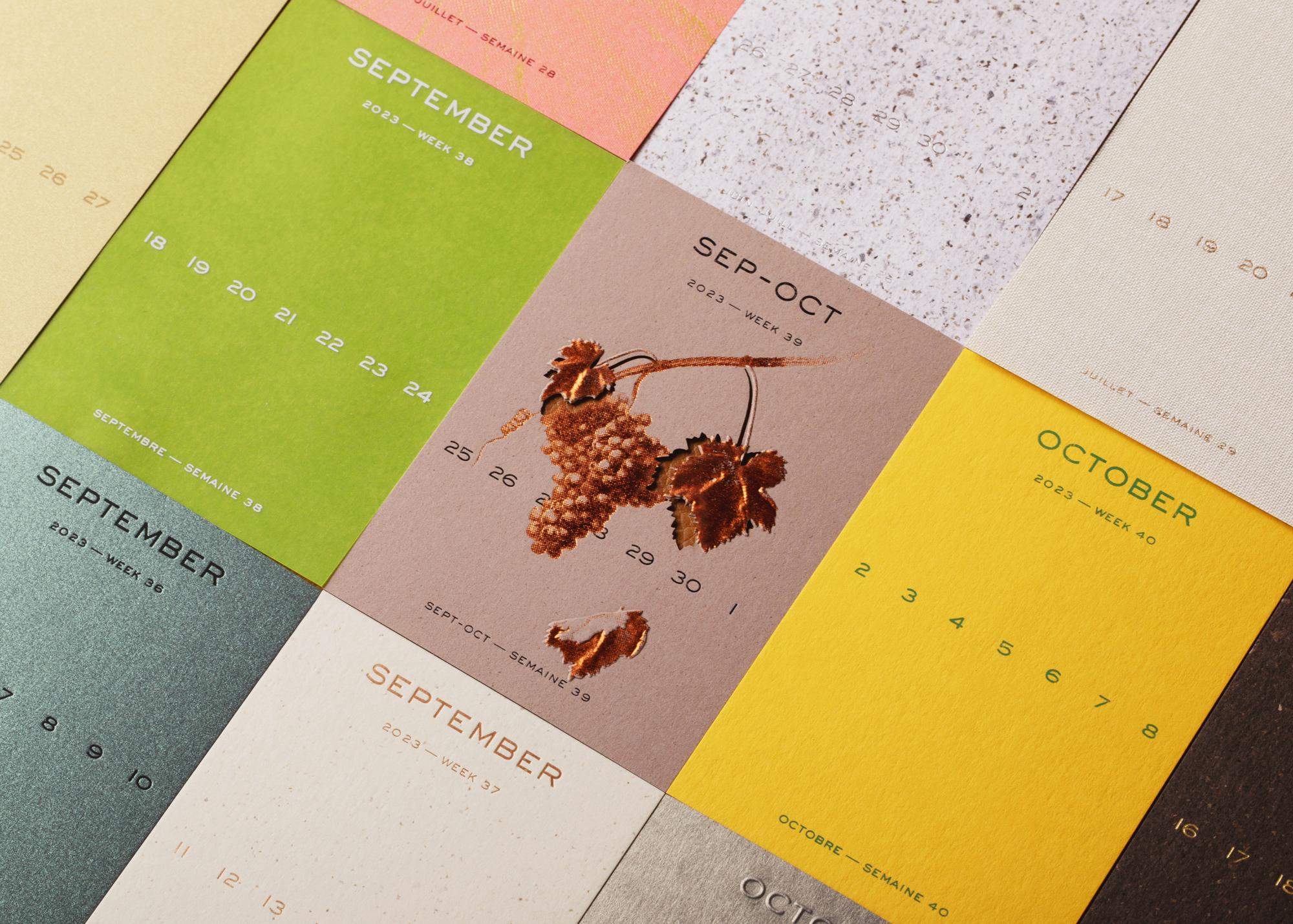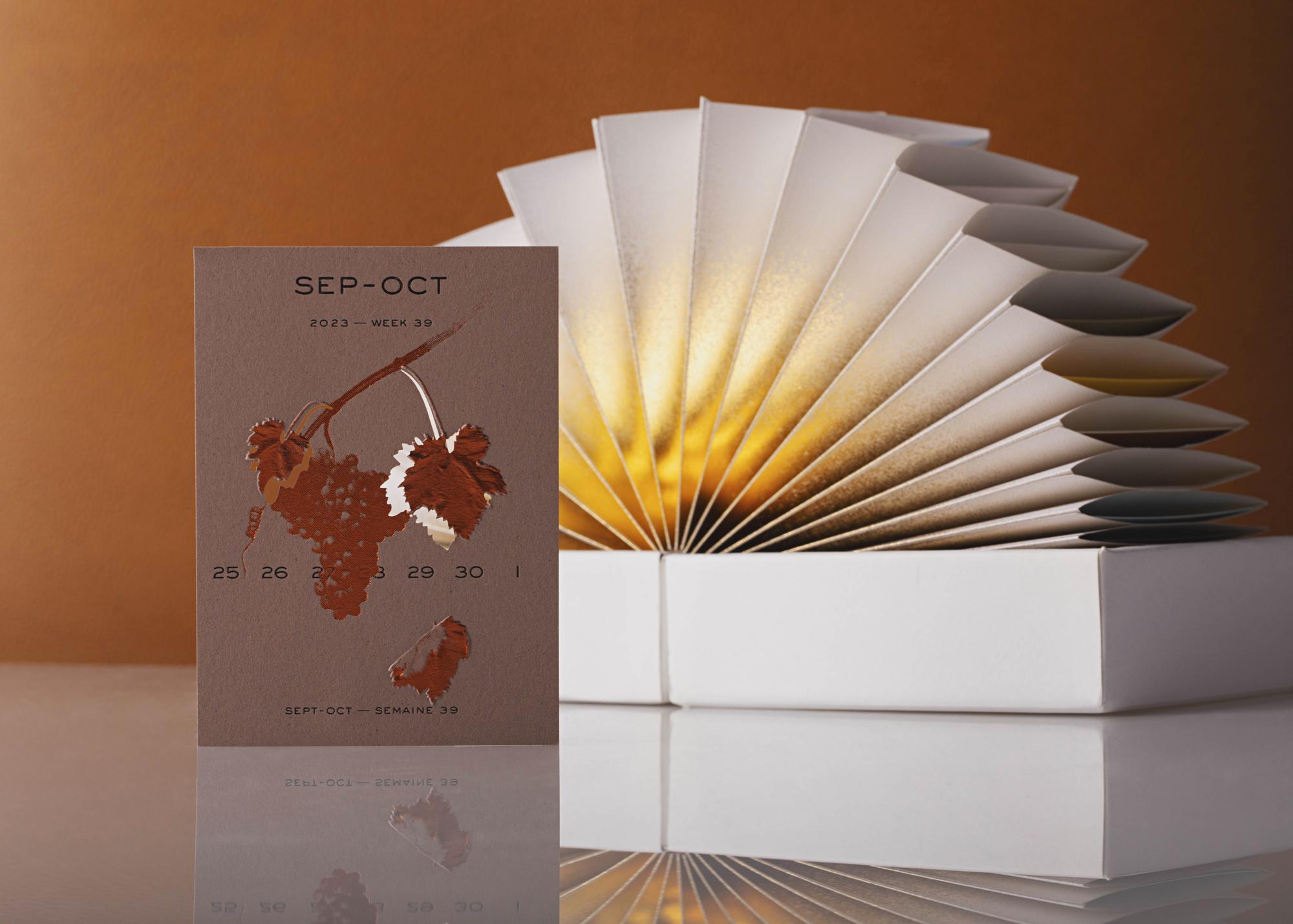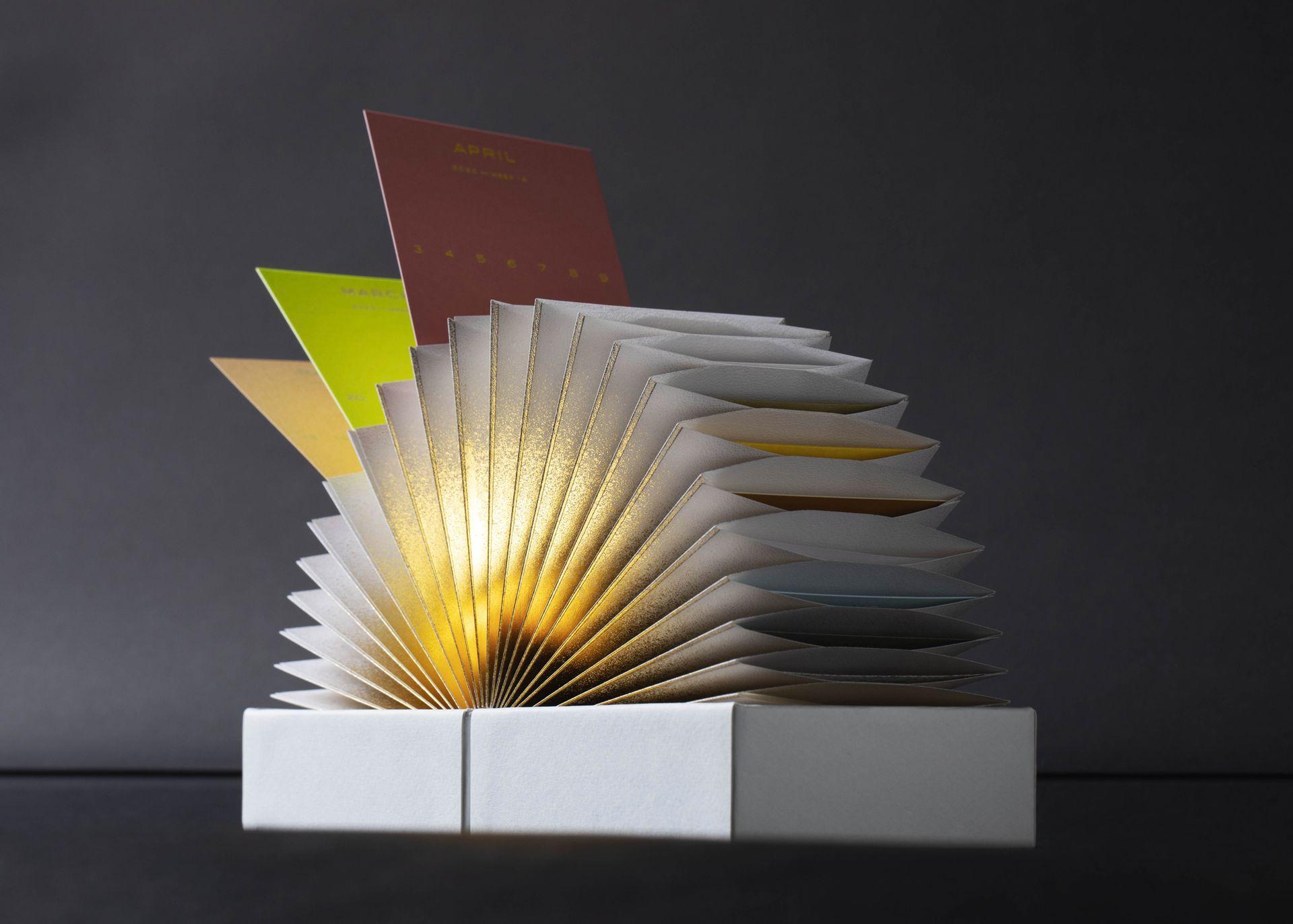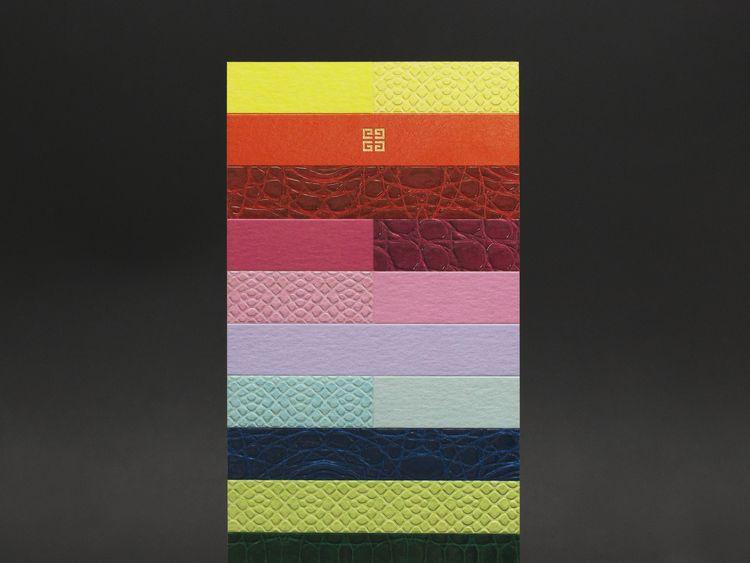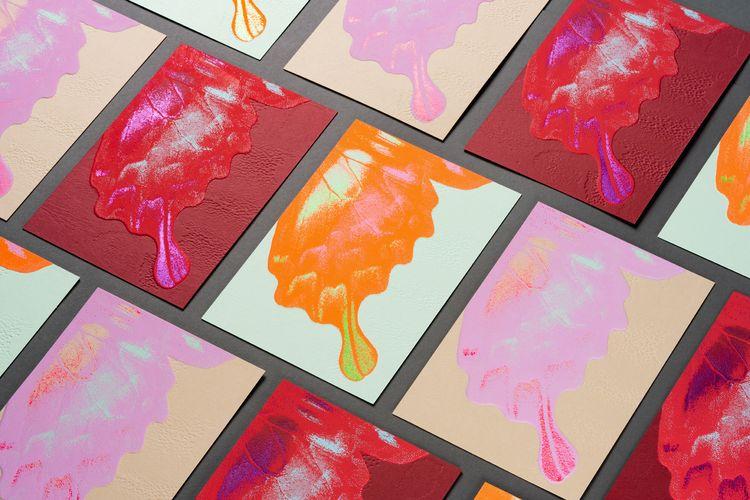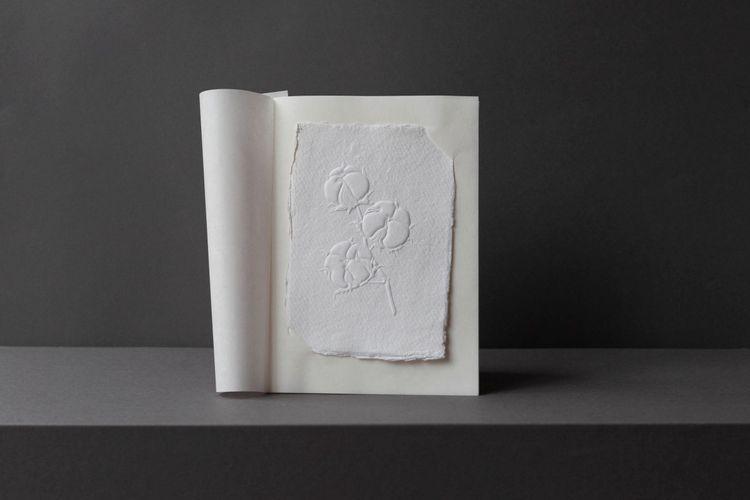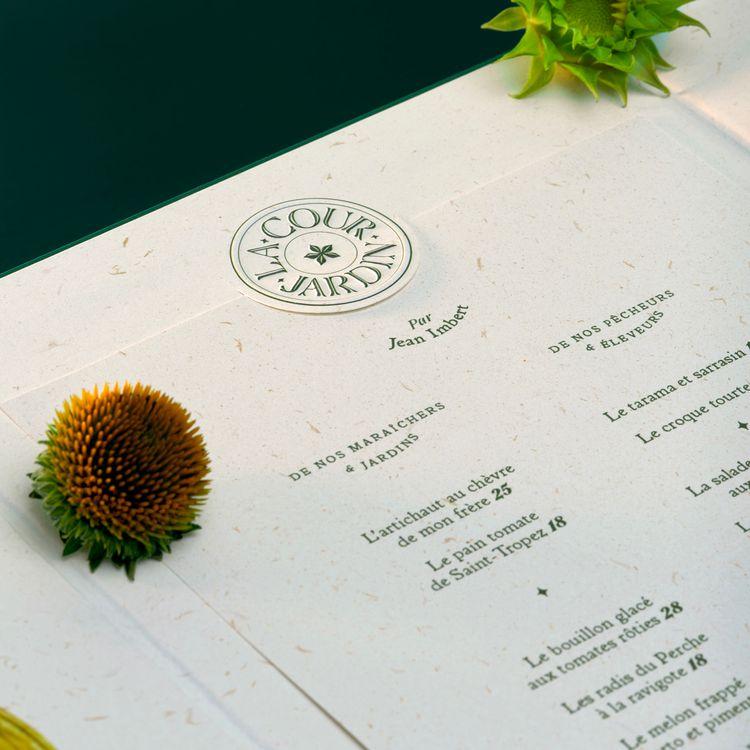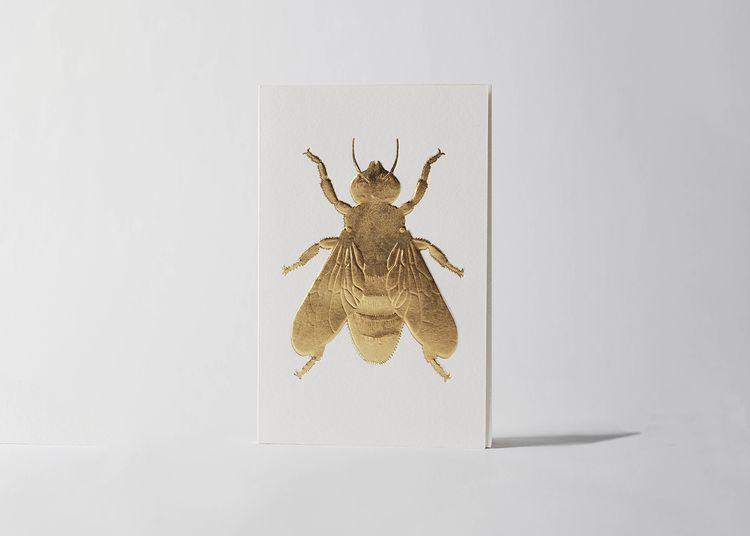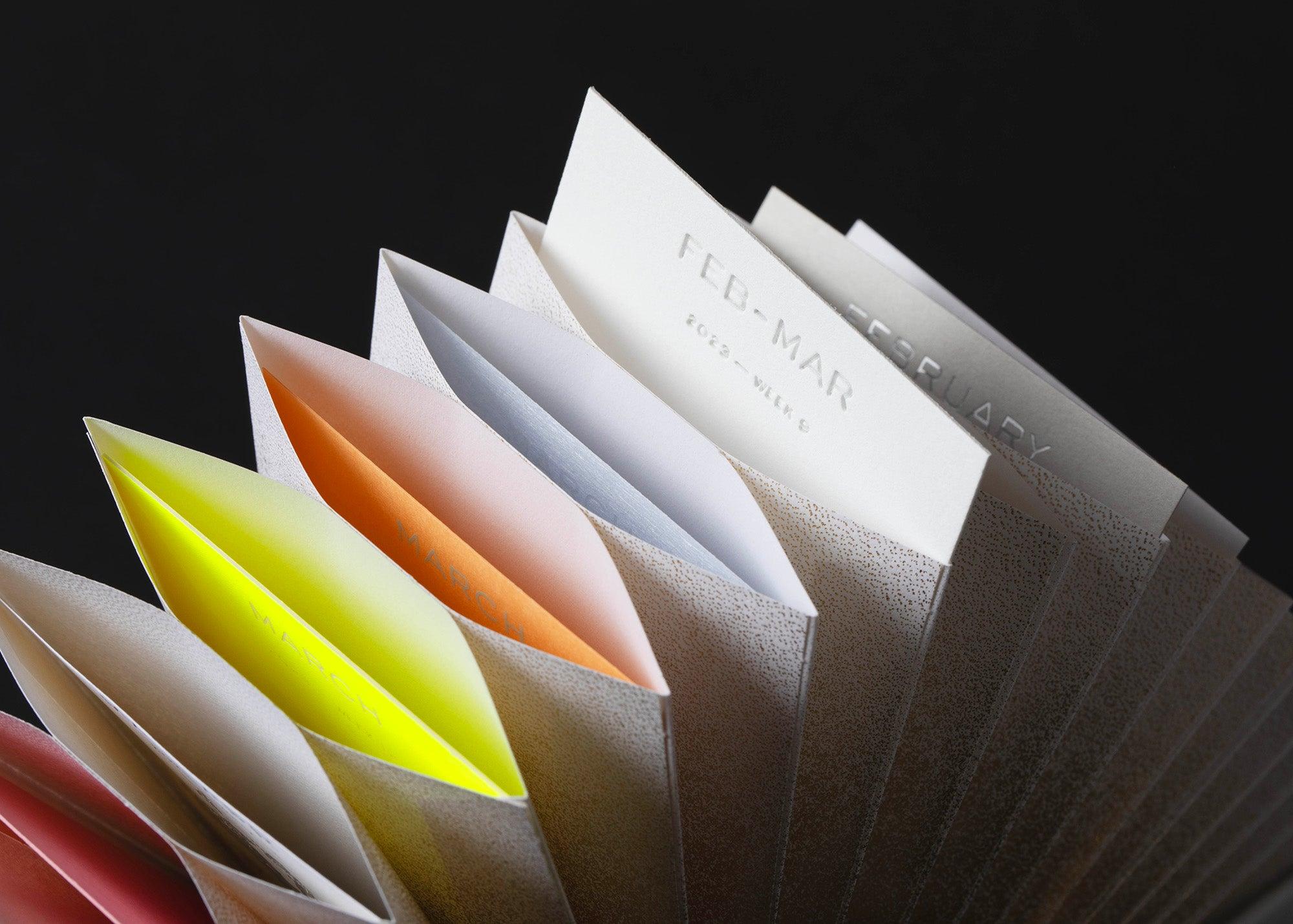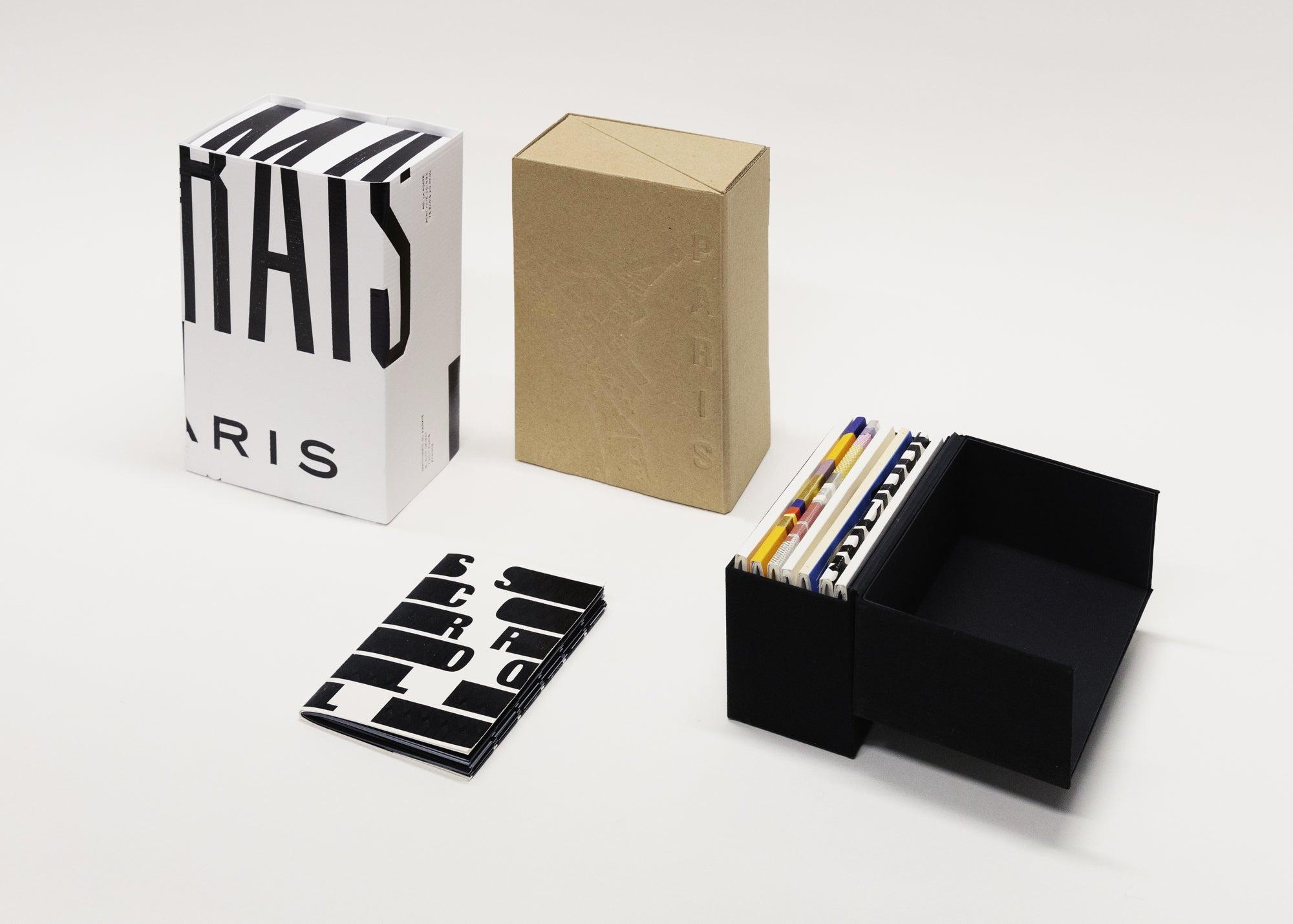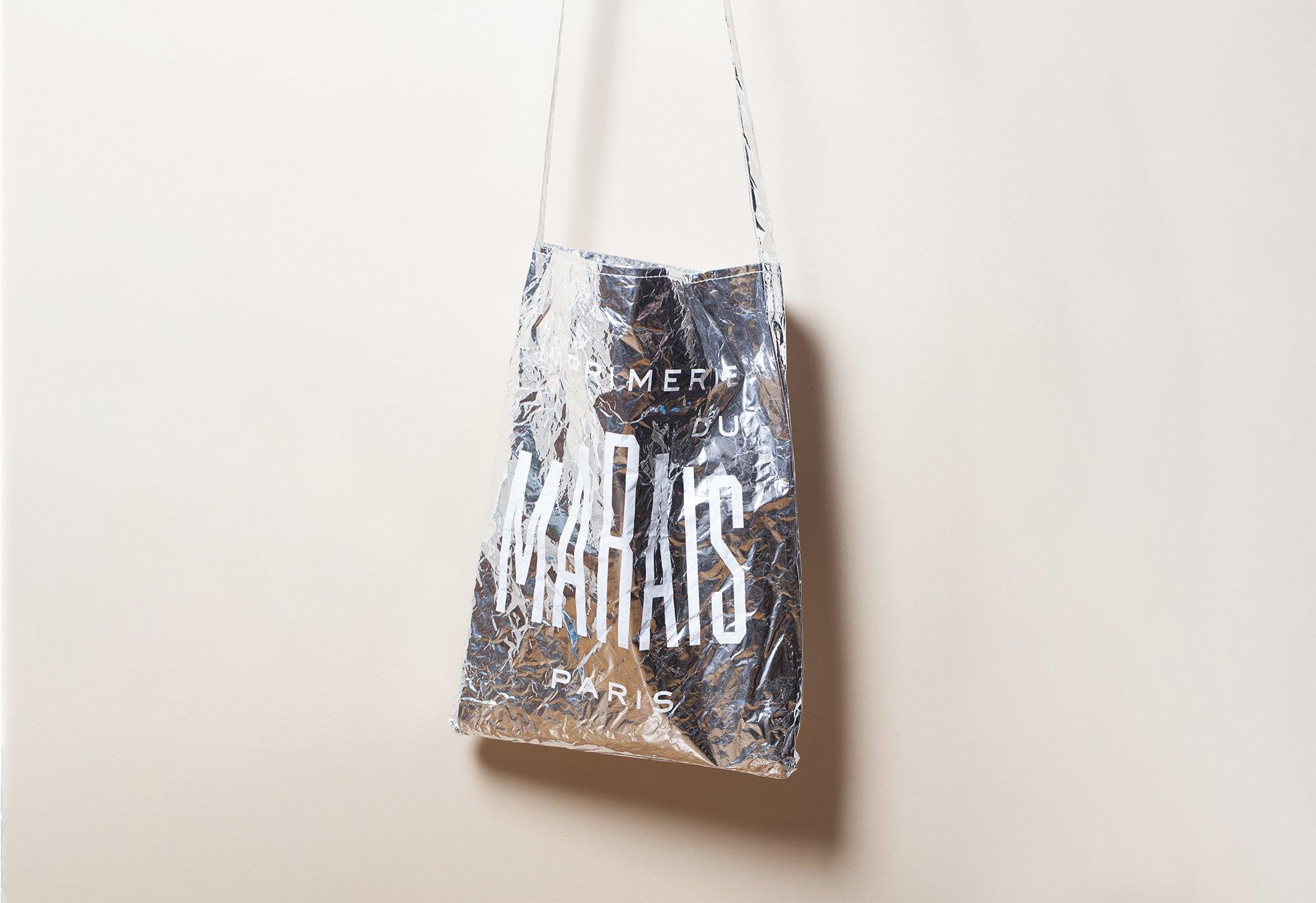2023 Calendar · Imprimerie du Marais A sustainable calendar
The 2023 calendar by Imprimerie du Marais is an invitation to roam colours and textures throughout the seasons. An inspiration source designed by the Made Thought agency, it reveals the excellence of our 8 workshops’ expertise. The 52 printed weeks slipped into gold-tinged pleats highlight a selection of papers drawn from our stocks, adorned with 2 eco-designed, sustainable materials resulting from new partnerships with Notpla and Sericyne. 5 specific designs with typically French accents underline the beauty of the essential links between nature and culture that this new collectible crystallises. Somewhere between beautifully crafted boxes and exquisite papers, L'Art du Possible captures the essence of tomorrow's print techniques and materials, and brings upmarket, bespoke creation into harmony with circular economy.
WEEK 0 · WISE JANUARY
As a solar god and creator, guardian and protector, Janus gets this calendar off to an auspicious start. Particularly associated with the cyclical passage of time between beginnings and ends, in ancient Rome he was celebrated throughout the month of January, which is named after him. This was done by decorating doorways with laurel branches and lanterns, symbols of perpetual liveliness and light, and exchanging wishes and gifts (strenae) to ensure health and prosperity. This tradition has crossed ages and borders in the wake of the wise god of two faces, whose debossed and embossed profiles, from the past to the future, endow this first blank page with the promise of infinite possibilities.
WEEK 13 · A FACETIOUS FISH
In France, an "April Fool" is called an "April Fish". The iridescent scales of this fish, a mesh of finely cut foiling, reflect the richness of France’s tradition of an April 1st full of pranks, often taking the form of a paper fish taped to the back of absent-minded people. This little game—which mixes various pagan and religious rites of passage, such as fertility or inversion rituals, the end of Pisces or winter, the figures of Christ, the fisherman, or the messenger of love, the celebration of spring or Lent—reminds us that January 1st has not always marked the beginning of the year. From the 7th century until 1564, New Year's Day was celebrated around March 25th in France, on the principle of the Roman strenae, suggesting that the "April Fish" is a playful memory of this New Year of bygone days.
WEEK 18 · FLORAL LUCK
Once its ribbon has been removed, a delicately embossed, elegantly die-cut sprig of lily of the valley illuminated with sunshine particles can be offered as a good luck charm on May 1st, as a way of wishing peace and prosperity by praising the return of sunny days and abundance. This custom, particularly celebrated in France, is rooted in Celtic and Roman rites of spring. However, the tradition of gifting lilies of the valley on May 1st only dates back to 1561, when Charles IX decided that the ladies of his court would receive this flower on May 1st as a Day of Love present. The tradition was revived in 1895 by the singer Félix Mayol, who wore it in his buttonhole during his triumphant Concert parisien on May 1st, and in the Belle Époque by top French couturiers, who gave them to their artisans and customers.
WEEK 23 · SERICYNE
If May’s luck is still alive, a silk leaf from a very limited series-partnership with Sericyne can be discovered in June. This French company founded in 2015 is reintroducing sericulture into France’s Cévennes region by developing fields of organic, environmentally-friendly mulberry trees—whose leaves, a food source for silkworms, bloom in June—as well as a silkworm farm and production workshop. The fruit of its micro-artisans’ hard work and a patented production technique, Sericyne silk is 100% natural, non-woven, and made in France. Eco-designed and sustainable, rich, delicate and resistant, it sublimates natural ingenuity and beauty into various forms. A new path for silk that combines integrity, innovation, excellence and bespoke creation—shared values magnified by the union of subtle foiling with silk that is either white or inlaid with gold.
WEEK 26 · NOTPLA
Presaging sweet escapes into salty sea-spray, the dawn of July presents a silver foil whose sparkles animate seaweed paper created by Notpla in 2021. This valuable partner, an English start-up founded in 2014, is making packaging disappear from the horizon by making it out of natural materials. Notpla paper is made of seaweed by-products sourced from environmentally-friendly sea farms in Europe. It is fully biodegradable, compostable, recyclable, and free of synthetic additives, coatings or stabilisers. Combining style and boldness, quality and performance, it is a metamorphosis of the ocean through innovation. The very nature of the seaweed it is made of—one of the most renewable resources on the planet—inspired its creation in a spirit of regeneration and revitalisation.
WEEK 28 · FIRE FLOWERS
In a blazing pink sky, "Chinese flowers" bloom in bitmap foil-bouquets that look like comets. These appeared in the 8th century, and were used in the art of war or to ward off evil spirits. Brought to Europe in the 13th century by Marco Polo, they rose to the rank of fine art in the 16th century as "fireworks". The first were set off in 1612 for the marriage of Louis XIII with Anne of Austria. Fireworks then became a regular form of entertainment, peaking in France under Louis XIV. They took on a revolutionary tinge in 1789, but it was not until the French Third Republic that they became a permanent symbol of the celebrations of July 14th, which became a national holiday through the Raspail law of July 6, 1880; a dual commemoration of the Storming of the Bastille and the Festival of the Federation, between the end of absolute monarchy and the union of the nation.
WEEK 39 · IN VINO VERITAS
An ecstasy of embossing, cutting, and copper bitmap foil, a fruitful vine rests on grape paper. Harvested in France in September and October, grapes are typical of "wine country". Viticulture spread through Celtic and Roman Gaul after arriving with the Phocaeans on its southern shores in the 7th and 6th centuries BC. From the 4th century, the Christian liturgy contributed to its development, to the extent that the French Republican calendar’s first month, vendémiaire, was named after the grape harvests [vendanges]. Celebrated today through festivals, grape harvests were glorified in ancient Rome in honour of Jupiter and Venus, though they are often linked to Bacchus and his Greek equivalent. Symbolising rebirth and divine fire, Dionysus reigns over the pleasures of life, vegetation, vines and wine—a "fire water" that is supposed to bring truth or immortality. Cheers!

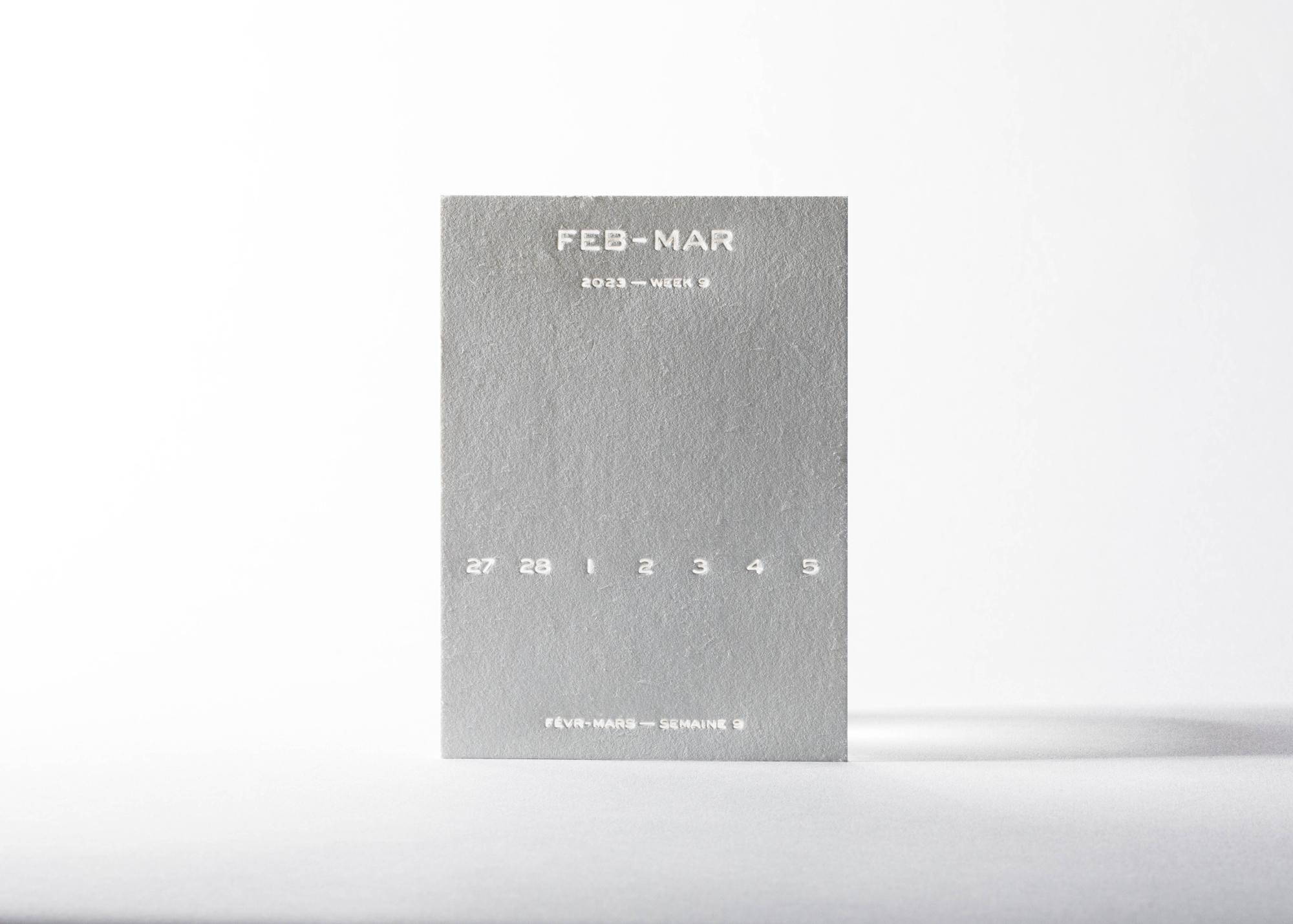
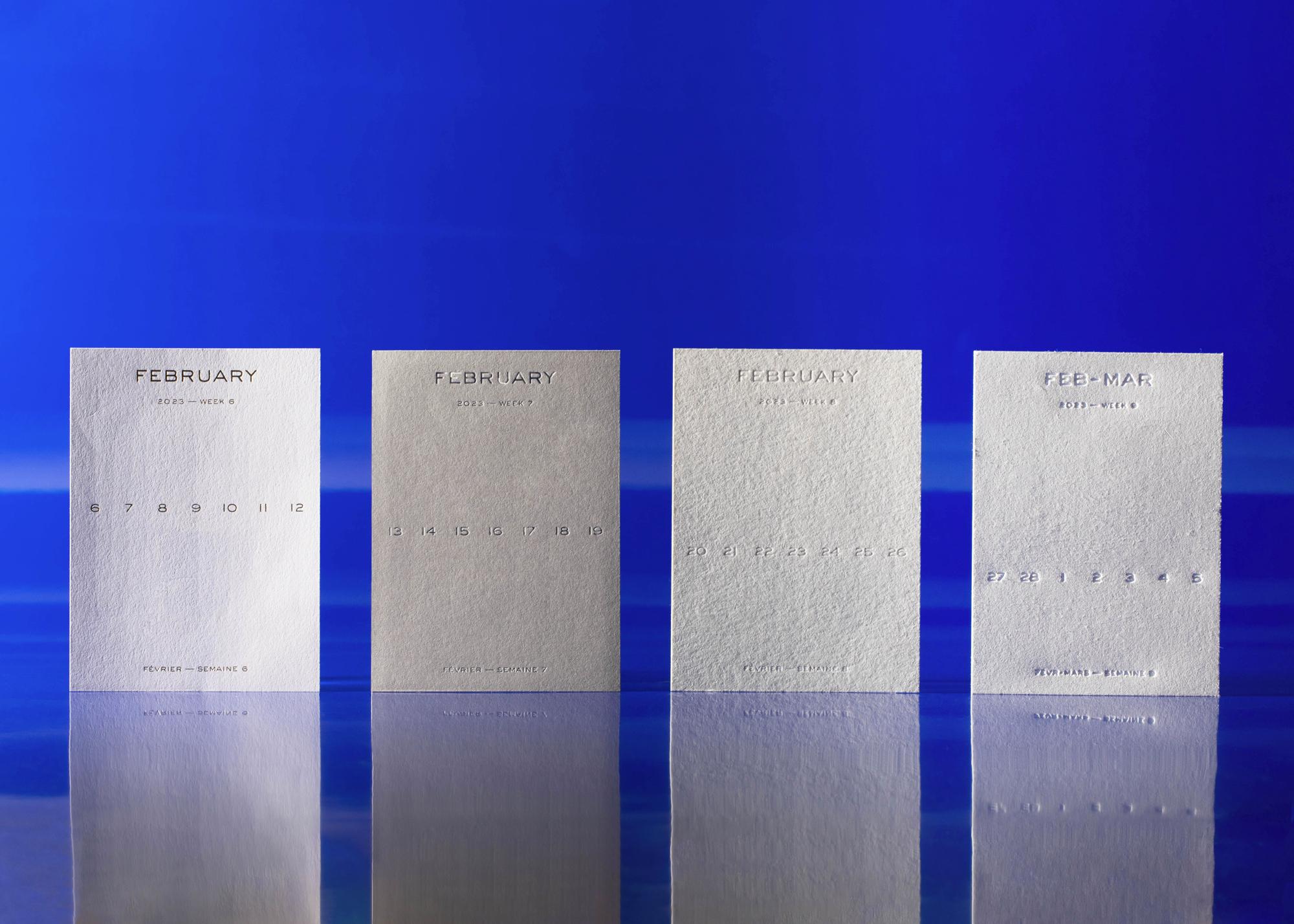

Behind the scene
The Workshops

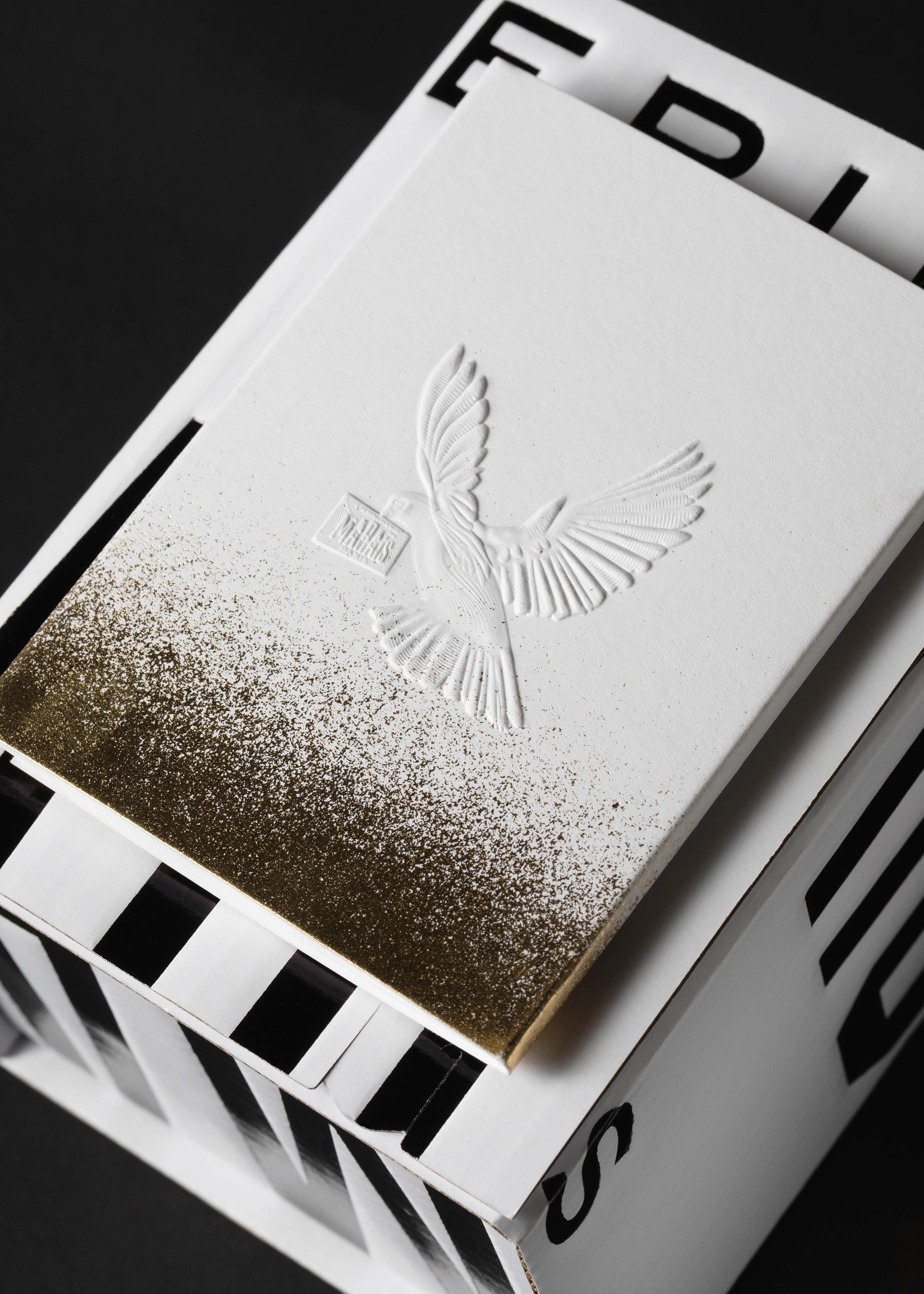
"The 2023 calendar is an invitation to roam colours and textures throughout the seasons."
